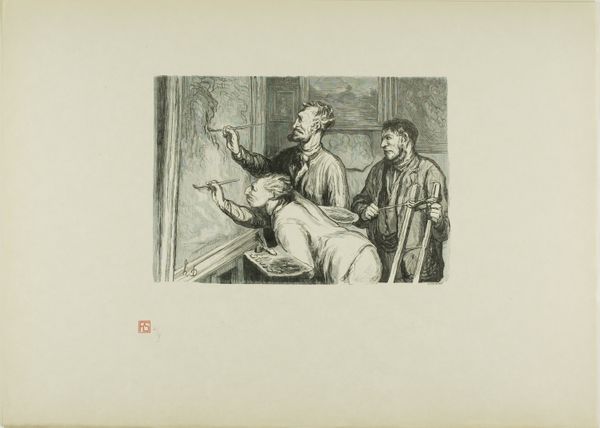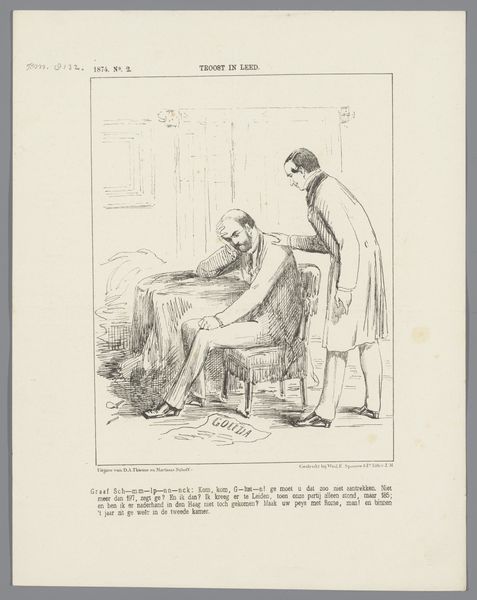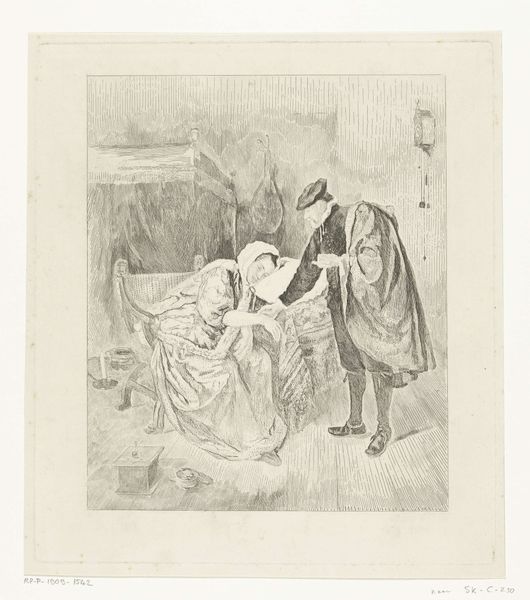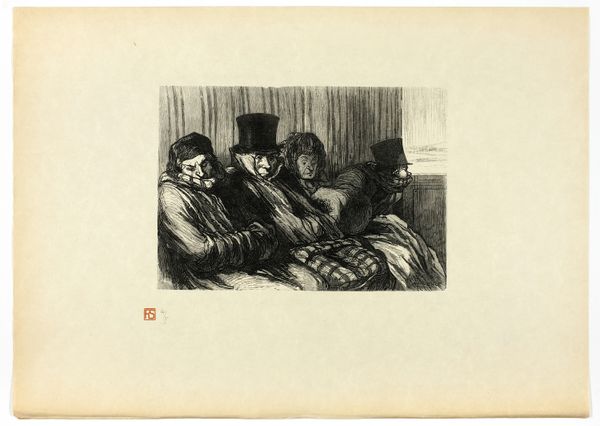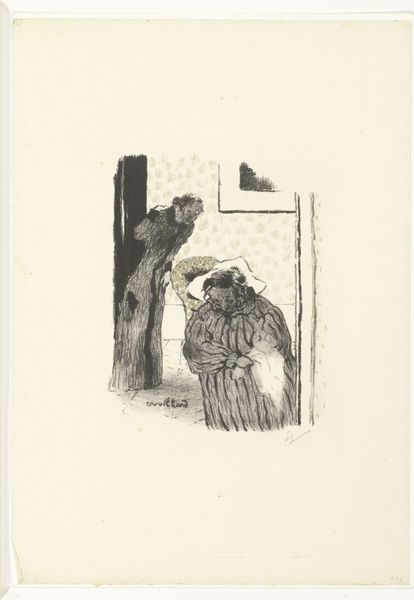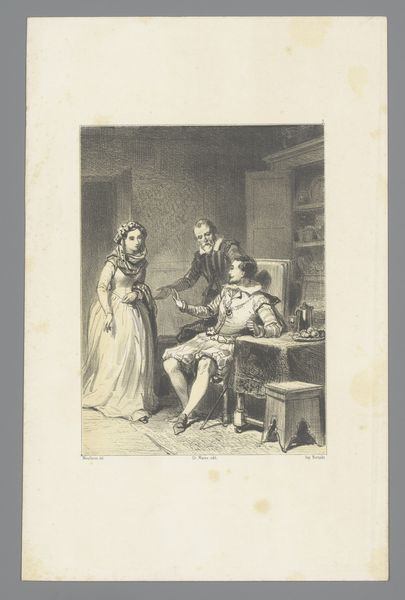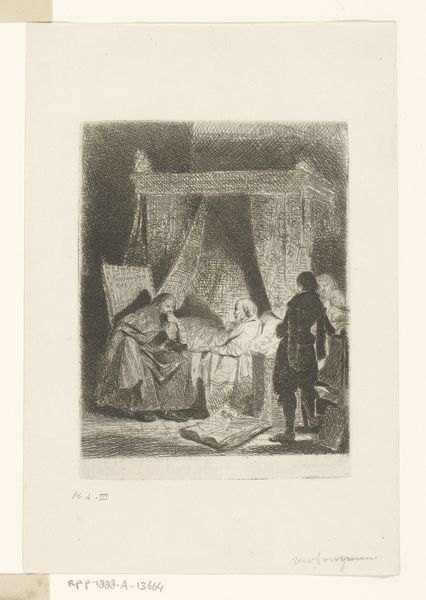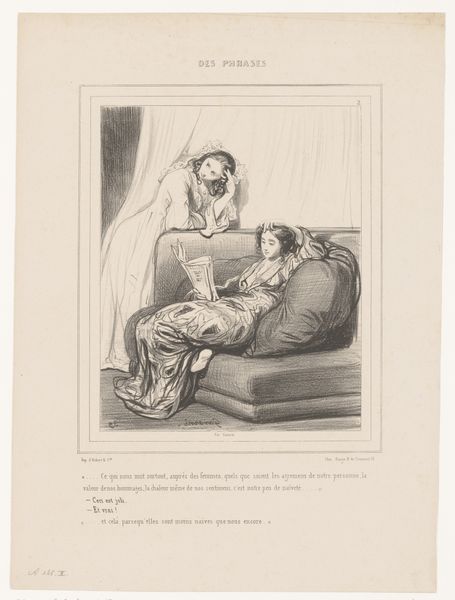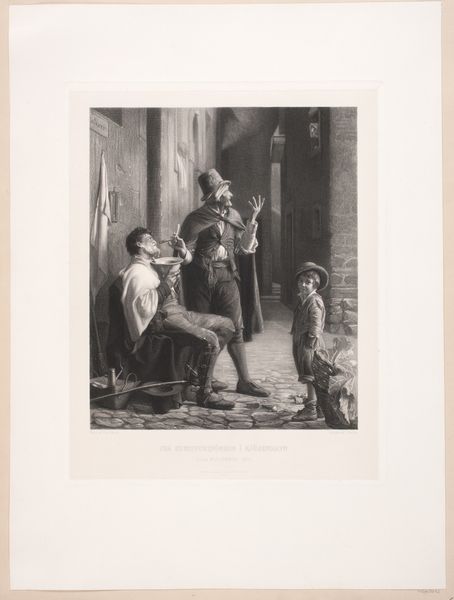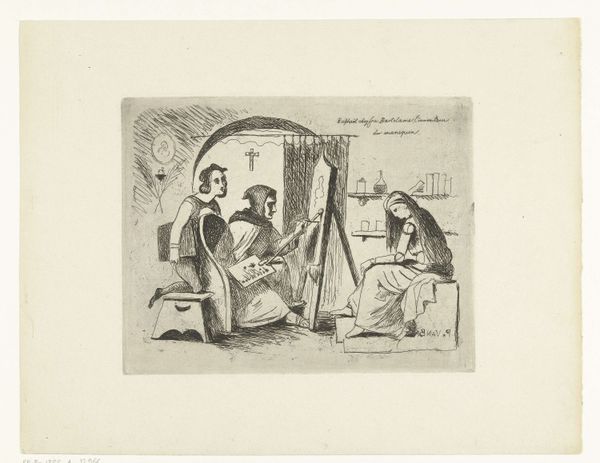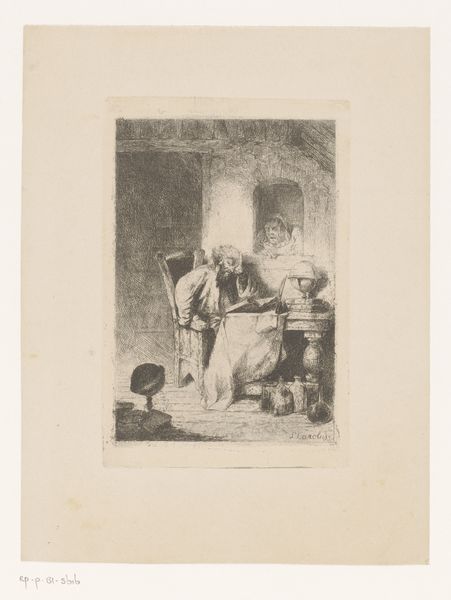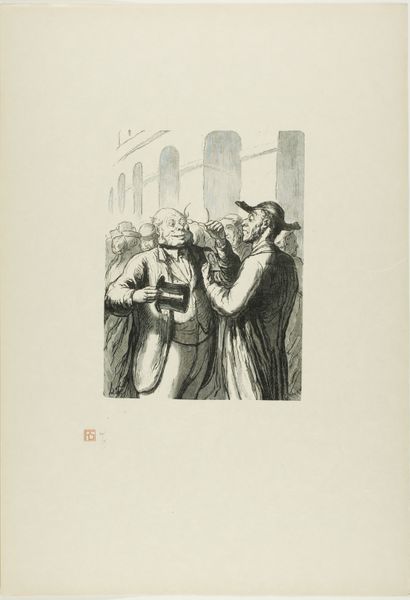
Un bureau d'attente d'omnibus, from Tirage Unique de Trente-Six Bois Possibly 1862 - 1920
0:00
0:00
Dimensions: 224 × 158 mm (image); 470 × 324 mm (sheet)
Copyright: Public Domain
Editor: We are looking at Charles Maurand's "Un bureau d'attente d'omnibus" from around the late 19th century, an ink and engraving print. It has an almost claustrophobic quality, despite the delicate linework. What stands out to you about it? Curator: Notice how the artist foregrounds the material conditions of urban transportation. The scene depicts people waiting – arguably suffering – for an omnibus, a clear nod to genre painting. How do the materials and method of printmaking serve this narrative? Editor: Well, the engraving process allows for incredible detail, capturing the textures of clothing, the signage, and even the weariness on people’s faces. Curator: Precisely. The medium’s capacity for mass production mirrors the mass transit system itself. Consider the socio-economic implications: this is not an idealized depiction of urban life, but a look at the commodification of transit and its impact on diverse social classes crammed together in a small, artificially bounded space. Where do you see tensions arising in that type of context? Editor: You can definitely see a stark contrast in the people's attire, separating what appears to be wealthy folks and a less privileged group near the bench on the left. It also calls attention to how labor, especially for the omnibus companies, relied on creating a consumer desire, pushing people through the transit systems like products themselves. Curator: Indeed. The work speaks volumes about how new systems of transit are embedded in—and become constitutive of—urban social fabrics. Even the advertisements become props to represent the growing culture of consumption! Editor: It's fascinating how a simple waiting room scene reveals so much about social dynamics and industrial processes. I will certainly remember that it’s not just a scene; it's also about labor, class, and consumption. Curator: Exactly! It is also about seeing what can be produced with limited resources. Hopefully, you also see art beyond a representational value of cultural refinement!
Comments
No comments
Be the first to comment and join the conversation on the ultimate creative platform.
